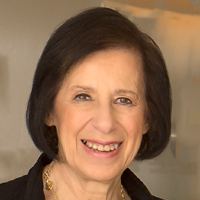
Framing people or groups into categories becomes a form of shorthand for certain characteristics you believe they share.
However, think about it. Are all the people in your family the same? Are all the folks in your neighborhood the same? How about all 18-year-olds in the freshman class of the college your child attends (or attended)?
What’s Wrong with Categories?
When you use the shorthand method of categorizing people — baby boomers, Gen Y (age-based), doctors, engineers (profession-based), women, widows (gender-based) — you miss the individual characteristics that make people special. For the same reasons, we should not lump all seniors into one category.
I have worked for over 30 years as a financial advisor at a boutique fee-only wealth management firm in New York City, and especially enjoy helping women and people in or nearing retirement. One client of mine set an appointment for a check-up with a geriatrician. On researching the young doctor’s bio, the client found that the doctor had said, “I love working with seniors. Their life stories are so interesting.” Because my client knew seniors who were dull as well as some who were fascinating, she felt the doctor did not recognize differences and was demeaning to older patients, so she canceled her appointment.
Think of people on a bus trip. They all bring different baggage. Let’s consider seniors in the same way. There are seniors who are ill, or who can’t work, or who want to continue working or who choose instead to pursue hobbies. There are those who have sufficient money for their retirement years, those who have no savings and those who have saved a lot but now have many calls on that money.
Recently, I’ve been interviewed on many podcasts, in America, in Germany, even by an Australian host. After asking about my own career and talking about people’s financial habits, they uniformly want to know: “What is the one thing you would tell women or couples or investors or seniors or retirees?”
Only one thing?! Really?! Who’s in the audience? What are their backgrounds, financial knowledge levels and life experiences? Let’s exchange that information, and then we can talk.
Just as there is no one stock to recommend for the entire audience at an investing lecture you are giving, no one retirement plan that works best for everyone listening to your webinar or no single amount of savings that everyone needs to know that they can retire on, there is no single best financial advice for everyone. It depends on personal circumstances, desires, needs and individual traits. It also depends on savings, spending patterns, how far off the client’s retirement date is, their current health and their medical experiences.
What You Can Lose
As financial advisors, the work we do is very intensive and should pertain only to the specific individual or couple who are being advised at any one time. If you categorize people, you may end up with the same results as my client’s geriatrician. You also can make mistakes in the advice you give if you rely too heavily on categorizing clients.
In addition, you may lose even more:
- Getting to know your clients individually. This is a positive; by doing so, you become an expert in their specific situation and financial picture.
- The trust you earn by knowing and respecting someone. It’s very difficult to regain trust once it has been lost.
- A personal relationship that can last decades. Ultimately, this is the best result of all, once you get to know your clients.
- The ability to work on a unique client problem that you identify and understand.
- Referrals to new clients. Clients will refer their friends and family to you when they believe you understand them.
- Ongoing family relationships (sometimes two or three generations). To be trusted enough by your clients to be asked to advise their loved ones shows the depth of their belief in you.
- The confidence of clients who know you are on their side. Confidence creates a very strong bond with your clients.
- Being fully present for your clients.
Another of my clients noticed that her family’s advisor never included her in financial discussions. He seemed to want to talk only to her husband. When her husband became ill, she moved all their accounts to an advisor at my firm who enjoyed talking to her.
Once we view certain groups of people as all the same, we can no longer excel at our jobs. Our value to clients diminishes. It becomes less likely we can help them with their particular circumstances when we don’t acknowledge the importance of their unique characteristics. At best, we should maintain our focus on their priorities, listen well, hear clients out, take them seriously, and begin to solve their problems and address their questions individually.
Welcome Differences
Years ago, this truth was brought home to me. As I work with many widows, it was easy at first to think that all widows approached their new reality one way, or maybe a second way.
But, over time, talking to each woman about her current lifestyle, her desires, her family and her finances — as well as noting the differences between a sudden widow with young children whose husband didn’t make it home one night and another whose husband had been treated for a terminal disease for the last few years — made these clients’ differences clear to me. While both people could be classified as widows, and both faced significant changes, they were focused on different decisions and had different pasts, needs and, yes, possibilities.
The book “Saturday Night Widows,” written by Becky Aikman, makes obvious the many differences among all widows based on the experiences of a group of six of them.
A psychologist I sometimes call on to help with client issues has told me that couples in marriages can disagree because the partners were each brought up in different households, with different values, unique interactions, varying rules, individual structures and contrasting ways of resolving problems.
One couple he knows had a conflict over a gift for the wife that the husband made himself and presented proudly. The wife said, “This is not a gift! Where is my gold chain?” It wasn’t the expensive present her father always gave her; rather, it symbolized what the husband’s family thought was a more loving gift. Once they understood the source of their divergent expectations, they were able to resolve their conflict and settle into a new appreciation of each other.
In fact, grouping people together in your practice may not bring the clarity you hope for. Returning to seniors, they form a group comprising people from various walks of life, with many experiences, varying situations and differing comfort levels. Their disparities are likely more extensive than their similarities.
Wait for It
Seniors, like any other age-based group, remain different from one another. (My oldest client today is over 100 and his own life story as a special, nurturing teacher is disarmingly unique among our clients.) Of course, with older clients, personalities, experiences, goals and resources are more important pieces of the puzzle than age. As a financial advisor, I am committed to addressing the unique issues my clients face, and helping them live the lifestyle they desire. Helping clients reach their personal goals is why we at Altfest do the work we do.
Wait to get to know your client and see her or him as an individual before you decide to consign them to a category. Categories may be helpful for demographic analysis, but not for advisor-client relationships.
In his book “The Longevity Economy,” Joseph F. Coughlin, director of the MIT AgeLab, demonstrates how many ideas — especially about seniors — are inaccurate and out of date. With increased longevity, seniors today are creating a new way of living. He writes, “The old” make up a population so diverse that it almost defies characterization. Coughlin believes the people who misunderstand this will not prosper in this economy.
Let’s keep our personal and professional opinions to ourselves a while longer in any client relationship and make it our first priority to listen closely. That will help us understand their individual situations and point us to possible solutions customized for their particular challenges, whether it’s a senior client or someone younger. When we really listen and consider each person unique, we hear, we learn and we can help. That’s the real payoff.
Karen Caplan Altfest, PhD, CFP, is a Principal Advisor at Altfest Personal Wealth Management. She helps many of the firm’s clients on a variety of investment and financial planning issues and specializes in helping women clients and widows. Karen’s Financially Savvy Woman programs, including the Women’s Financial $pa, are popular with clients. Her focus is to educate and empower women.







